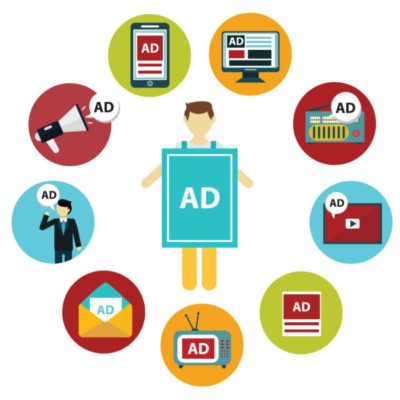Getting right to the point, there is no magic bullet when it comes to finding the right Ads platform and strategy for your B2B marketing campaign. B2B businesses are not the same which means what will work for one company may not necessarily work for another. Additionally, advertising works differently across industries. However, understanding what your options are (including an appreciation of the actions that have led to successful B2B advertising strategies), will help you develop your own successful campaign.
Some useful considerations in building a successful B2B advertising strategy include the following:
- Understand your target audience. Use qualitative and quantitative research such as face to face interviews and online surveys to learn your audience including their demographic data, what they want and what they expect from you.
- Create a message that speaks to them. Think about your audiences’ values, needs, pain points, expectations, and attitudes from your research and prove that you can deliver and help them succeed.
- Choose the best platform for your audience. In a nutshell, find out where your business customers like to consume content.
- Put in place a solid strategy. Clearly define what your marketing goals are including whether you would like to prioritize increasing traffic, capturing leads or conversions. The strategy should have a set of scheduled activities that will help you meet specific objectives.
- Treat each platform like a salesperson. Each platform should justify itself in terms of costs and results
The key to choosing the right Ads platform and strategy for your B2B company is to test each platform that is available to you and find out what your customers’ expectations are on each platform. This means that embracing a long-term approach to success with your advertising strategy is critical. Ultimately, a B2B company cannot maximize on each and every available advertising platform especially when some are clearly better in providing a higher ROI.
With the above thoughts in mind, here are the current top B2B advertising options available including some of the benefits and drawbacks of each that will help you choose the right platform and strategy for your business.
Table of Content
Linkedin Ads
LinkedIn claims to be the largest network for professionals across the world (over 500 million users) and the best B2B lead generator. Marketers affirm this claim and rank LinkedIn as the top platform for lead generation bar none. Whether you agree with these claims or not, as an advertiser, it makes for a compelling case to at least try and see what LinkedIn can do for your advertising campaign.
Some of the LinkedIn Ad formats that you will come across will include:
- Text Ads. Allows advertisers to build custom Ads that may consist of a 50X50 image, a headline, and a description. Advertisers can also choose their target audience, fine-tune precisely who they want to target, set their own bids, set a maximum budget and control the cost of Ads using Cost Per Impression (CPM) or Pay-Per-Click (PPC) options.
- Sponsored InMail. Allows advertisers to send personalized messages using LinkedIn messenger, directly to targeted audiences. Sponsored InMail messages are only delivered to active LinkedIn members, and you only pay for messages that are delivered. This service is mobile responsive, which means that it is excellent on all kinds of devices and can reach audiences when they are most engaged.
- Sponsored Content. Allows advertisers to run native ads targeting specific B2B audiences on LinkedIn’s main news feed. The B2B audience can be tweaked and customized according to different variables including job description, level of seniority, years of experience, industry, location, etc.).
LinkedIn advertising can be incredibly valuable to B2B advertisers because the platform directly serves the B2B community which means that anyone on the platform is a potential target that is already looking for a solution that an advertiser has to offer.
Facebook ads
Some B2B audiences may not always want to engage on LinkedIn, especially during out-of-office hours or days. If an advertiser has such an audience, then Facebook Ads can be amazingly useful in reaching such communities. Such audiences may not be looking for a product to purchase during their time on the platform and will, therefore, probably not engage B2B sellers from the platform. However, they may not be totally switched off from learning or entertaining themselves which means that they may be ready to consume content that may educate, inform, or entertain them.
Although Facebook is excellent for reaching B2B audiences that are ‘out-of-office,’ the platform also has a total audience of over 2 billion active monthly users that are being targeted by lots of other B2C and B2B advertisers. That said, Facebook offers lots of options to create tailored advertising campaigns based on siloed campaign objectives that are categorized into three main groups. Awareness, consideration, and conversion. As long as the advertiser has chosen their target audience and the Ad formats that they wish to use, Facebook can be highly effective for B2B Ad campaigns.
Advertisers that use Facebook with the main objectives of increasing the quantity and quality of traffic, brand awareness, lead generation, and conversion will tend to be quite successful with it.
Pay Per Click Ads
PPC advertising involves the advertiser paying a search engine each time a visitor clicks on their ad and is directed to their website. Although Google is, by far, the most common search engine, it is worth considering other search engines like Bing as well.
For both Google Ads and Bing Ads, the advertiser creates an Ad and bids on search terms or keywords that will make their Ad appear in the search engine results page. The advertiser only pays a maximum pre-determined limit based on when the visitor clicks on a displayed Ad. For the B2B company placing an Ad, it is useful to consider the value of their customer and how it directly correlates to each bid that they place with the search engine.
The advantage of PPC is that it allows the advertiser to cast a wide net to attract people who are already looking for the product in question. Also, the advertiser only gets to pay for adverts the audience clicks on. The advertiser can, therefore, experiment with their marketing mix and use different platforms, keywords, landing pages, etc. until they arrive at what works best for them based on their predetermined goals.
Display Ads
Display Ads allow the advertiser to create images, text, video and interactive Ads that are displayed on websites that are relevant to what is being advertised or put in front of people that are likely to be interested. For example, GDN (Google Display Network) will display Ads on YouTube, Gmail, blogs and news sites.
Pricing models used for Display Ads include:
- Flat Fee. A one-time fee is paid for a specific Ad placement.
- Cost per Acquisition (CPA). The advertiser only pays for Ads that result in specific actions taken by the customer. For example, registration, sign-up, purchase, etc.
- Cost per Impression (CPM). The advertiser pays for each set of 1,000 impressions that their Ad receives.
- Cost per Click (CPC). The advertiser only pays for Ads that visitors click on.
The advantage of display Ads is that they can be quite adaptable in terms of design, format, and channel used, depending on what the advertiser needs. They are also quite useful in raising brand awareness which can be a crucial part of marketing. Advertisers, however, need to use Display Ads wisely because if they are overdone, they can come across as being spammy which could lead to the Ads being entirely blocked by audiences.
Conclusion
To sum up, there is no panacea for a single Ads platform and campaign that will work for every B2B business. The only secret is to choose the options that will work the best for your business based on what your audience really wants or needs. Understanding what your audience wants and needs is a painstaking process that may take a long time to achieve. However, once it is realized, the fruits of your labor will be sweet and profitable for both you and your audience.








